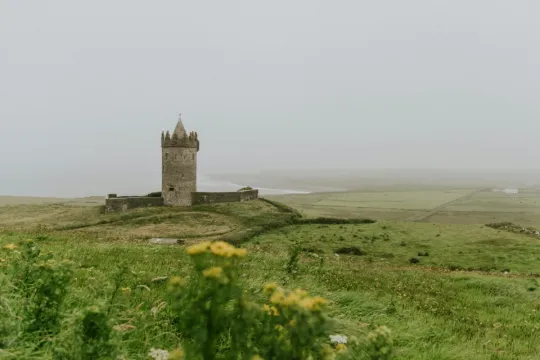The Irish People: A Journey Through Diversity and Culture

Introduction
Known for its lush green landscapes and rich cultural heritage, Ireland is also home to a diverse and vibrant population. The Irish people have been shaped by centuries of history, migration, and social change. In this article, we will take an in-depth look at who the Irish are, how their population structure developed, and what factors influenced their cultural identity. From ancient Celtic tribes to modern immigrants, the Irish represent a fascinating mix of traditions and new influences.
History of population in Ireland.
The history of the people of Ireland dates back thousands of years. The first traces of human settlement on the island date back to the Mesolithic period, around 8000 BC BC. Over time, these early inhabitants became more sedentary and began to form farming communities in the Neolithic period. However, it was the Celtic tribes that emerged around 500 BC, which left an indelible mark on Irish identity. The Celts brought with them their language, religion and social structure, elements that are still closely linked to Irish culture today.
In the Middle Ages, Ireland was a centre of learning and spirituality, attracting monks and scholars from across Europe. However, the Viking and then Norman invasions had a significant impact on the country's population and culture. The arrival of the English and their centuries-long rule over the island also left a deep mark, influencing everything from politics to economics to social structure.
Modern Demography
In modern times, the Irish population has experienced significant demographic fluctuations. In the 19th century, the Great Famine (1845-1852) had a devastating impact, leading to a significant decline in population through mass emigration and deaths. Millions of Irish people left their homeland in search of better opportunities in countries such as the United States, Canada and Australia. This Irish diaspora has profoundly shaped Ireland's identity and its relations with the world.
In the 20th century, Irish independence in 1922 marked the beginning of a new era. The population is slowly beginning to recover and in recent decades Ireland has experienced remarkable population growth. According to the 2022 census, Ireland's population is estimated at around 5 million, a figure that continues to grow due to a combination of births and migration.
Cultural diversity and migration
One of the most notable features of the Irish population today is its increasing diversity. In the last decade of the 20th century and the beginning of the 21st century, Ireland transformed itself from a relatively homogeneous society into a multicultural nation. The economic prosperity of the Celtic Tiger Era attracted immigrants from all over the world, including Eastern Europe, Asia, Africa and Latin America. These new residents have enriched the cultural, social and economic life of the country.
Immigrants to Ireland brought with them a variety of languages, religions and customs, creating a more diverse and vibrant society. In cities such as Dublin, Cork and Galway, one can often find international communities celebrating their own cultural traditions while integrating into Irish life. This diversity has brought challenges and opportunities in terms of social inclusion, immigration policy and public services.
Irish cultural identity
Despite increasing diversity, the Irish maintain a strong cultural identity, reflected in their love of music, dance, literature and sport. Although the Irish language (Gaelic) is spoken by a minority, it remains an important symbol of national heritage and is taught in schools. Traditional Irish music and dance, such as Céilí, remain popular and celebrated both locally and internationally.
Sport also plays a crucial role in the lives of the Irish. Gaelic sports such as hurling and Gaelic football are more than just a pastime; they are an integral part of the community's culture. Events such as the Irish Championship attract passionate spectators and promote feelings of unity and national pride.
Challenges and future prospects
As Ireland continues to develop, its people face a variety of challenges and opportunities. Although the economy has made a remarkable recovery since the 2008 financial crisis, it remains vulnerable to global fluctuations. Housing and the cost of living are pressing issues, especially in urban areas where demand outstrips supply.
Furthermore, the issue of immigrant integration and the management of a multicultural society is at the heart of public debate. The government and community organisations are committed to ensuring that all residents, regardless of their origin, have access to equal opportunities and can participate fully in society.
Diploma
The Irish people are a rich and diverse community, shaped by centuries of history, migration and social change. From ancient Celtic tribes to modern immigrants, Ireland’s population reflects a unique blend of tradition and modernity. Understanding this diversity and the challenges it presents is essential to fully understanding the dynamics of contemporary Irish society. As Ireland moves forward, its people continue to build a nation that honours its past while also embracing its future.